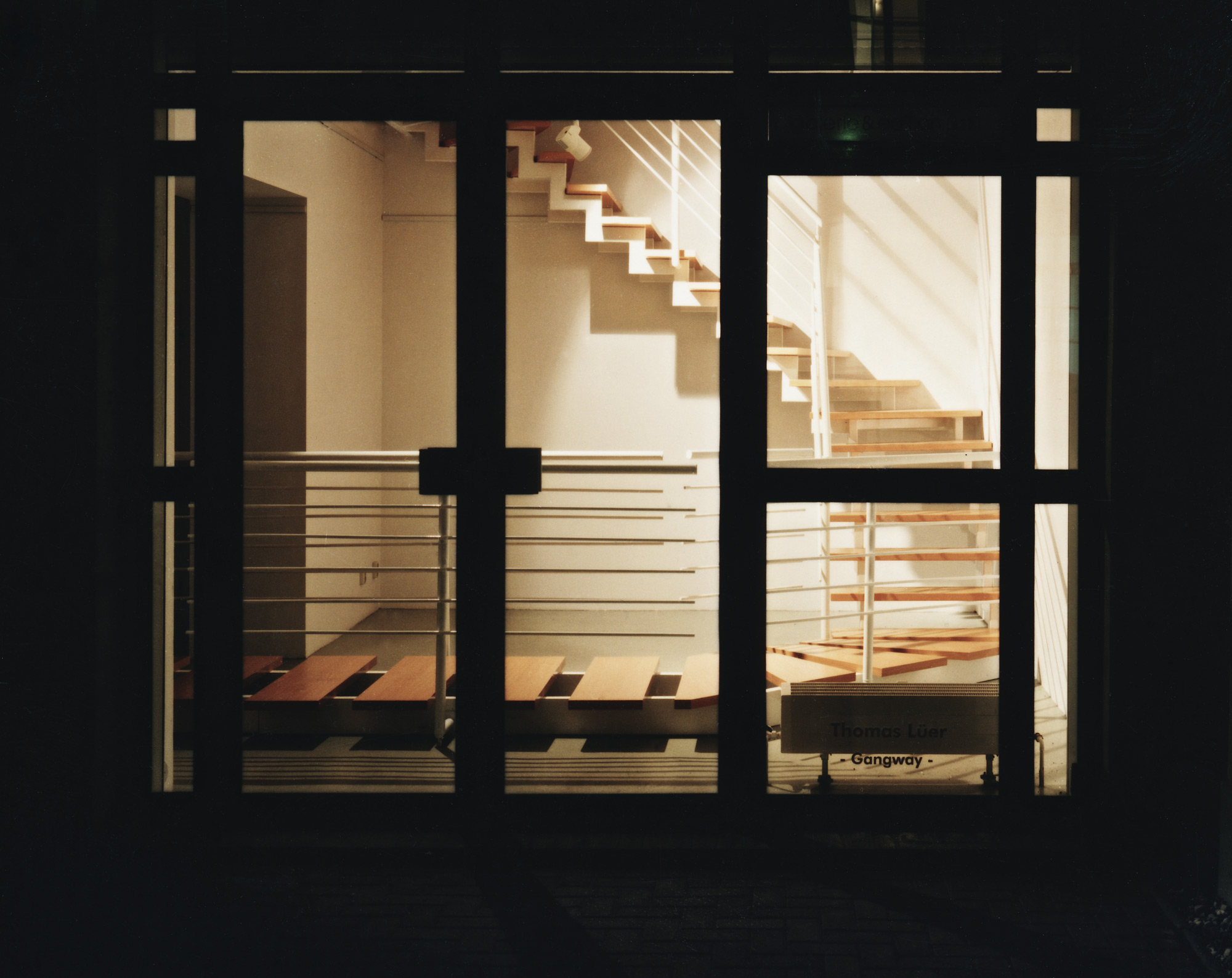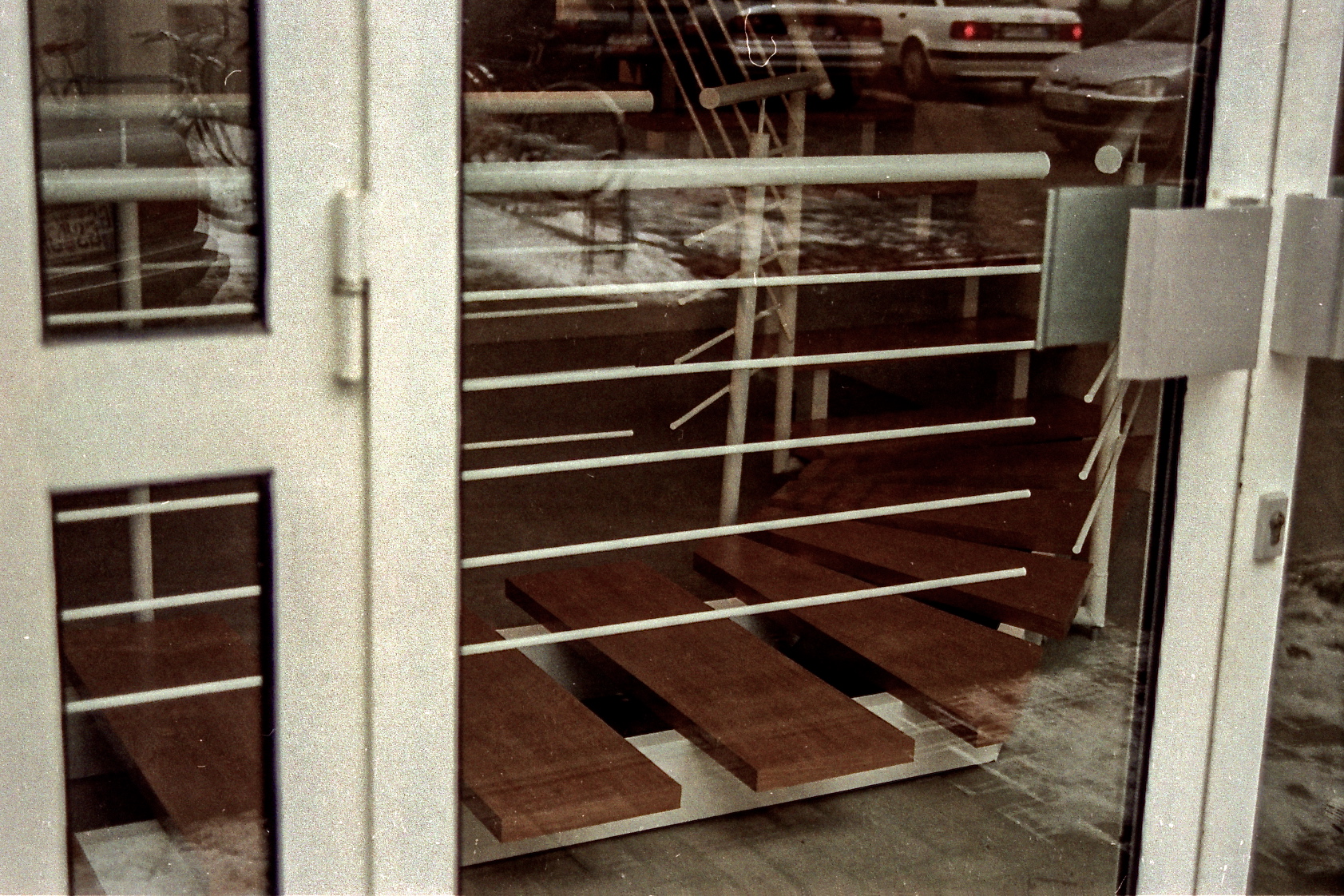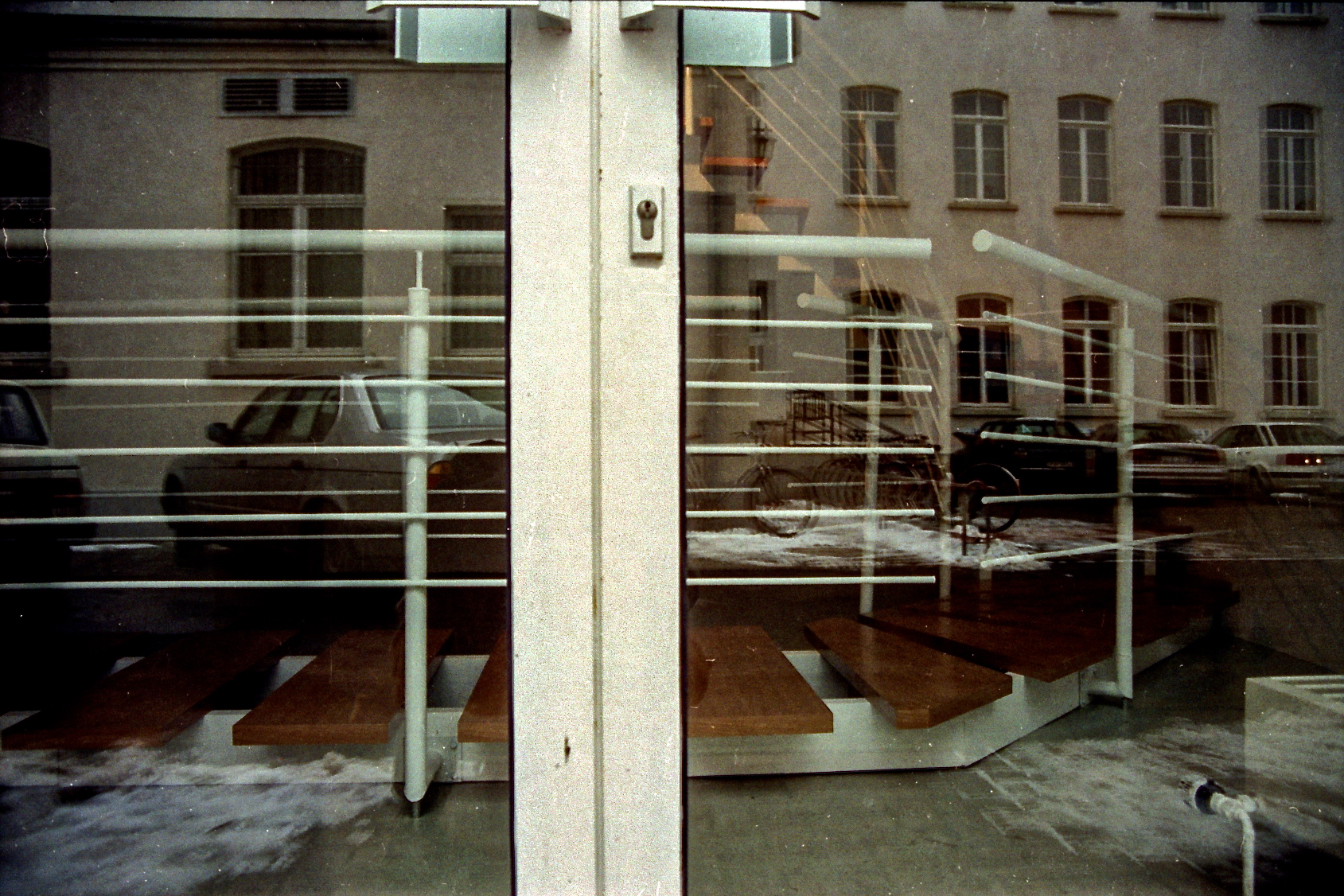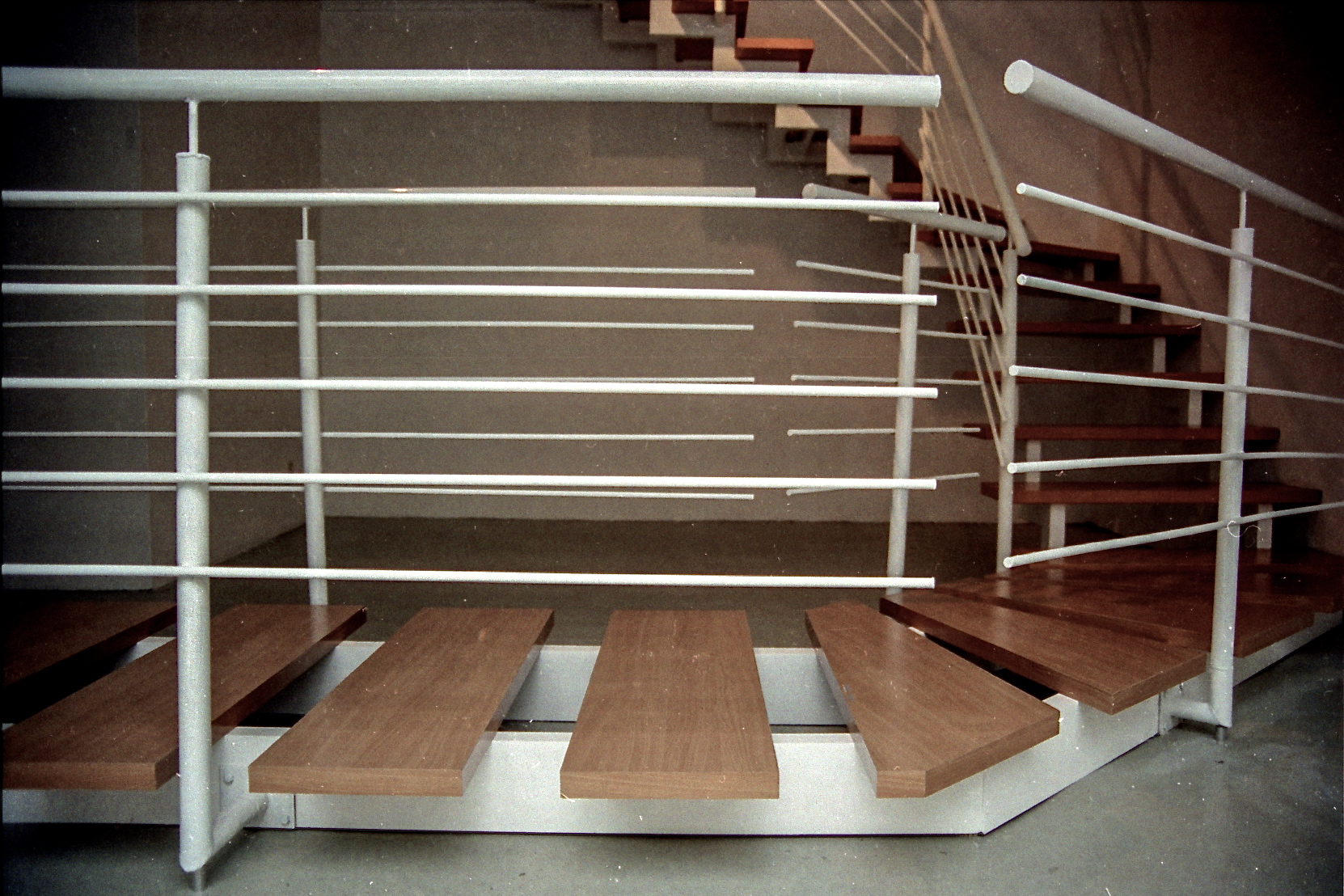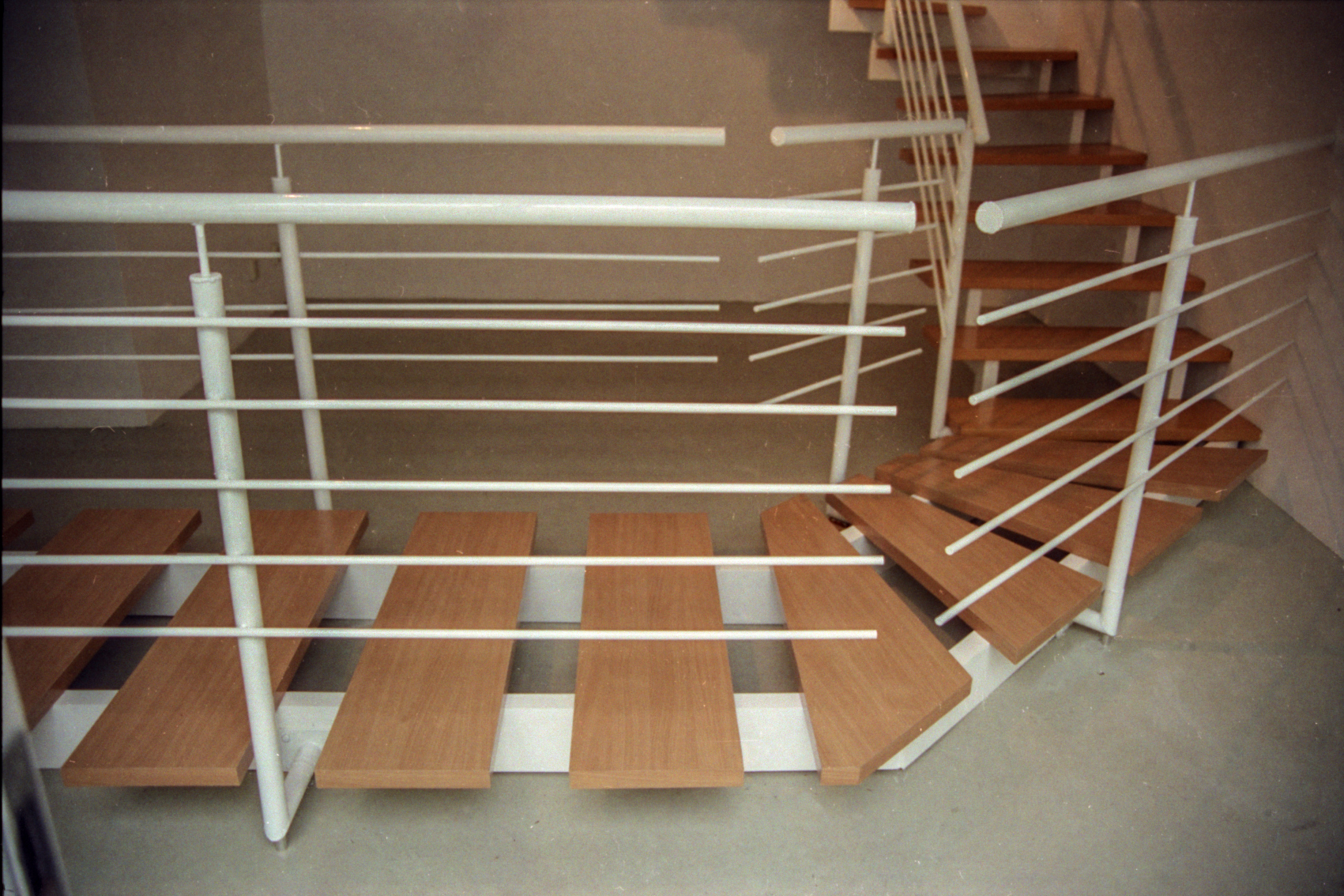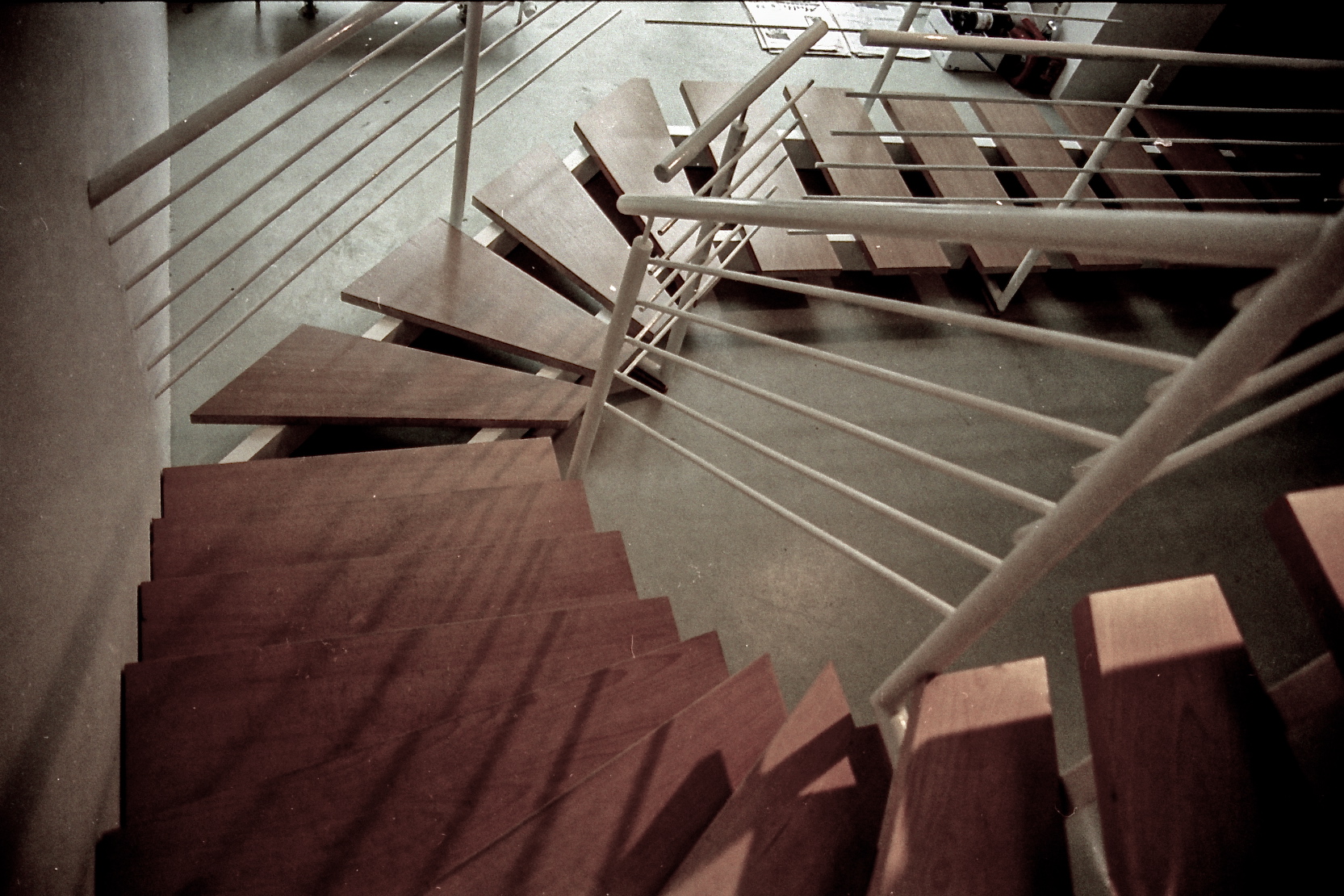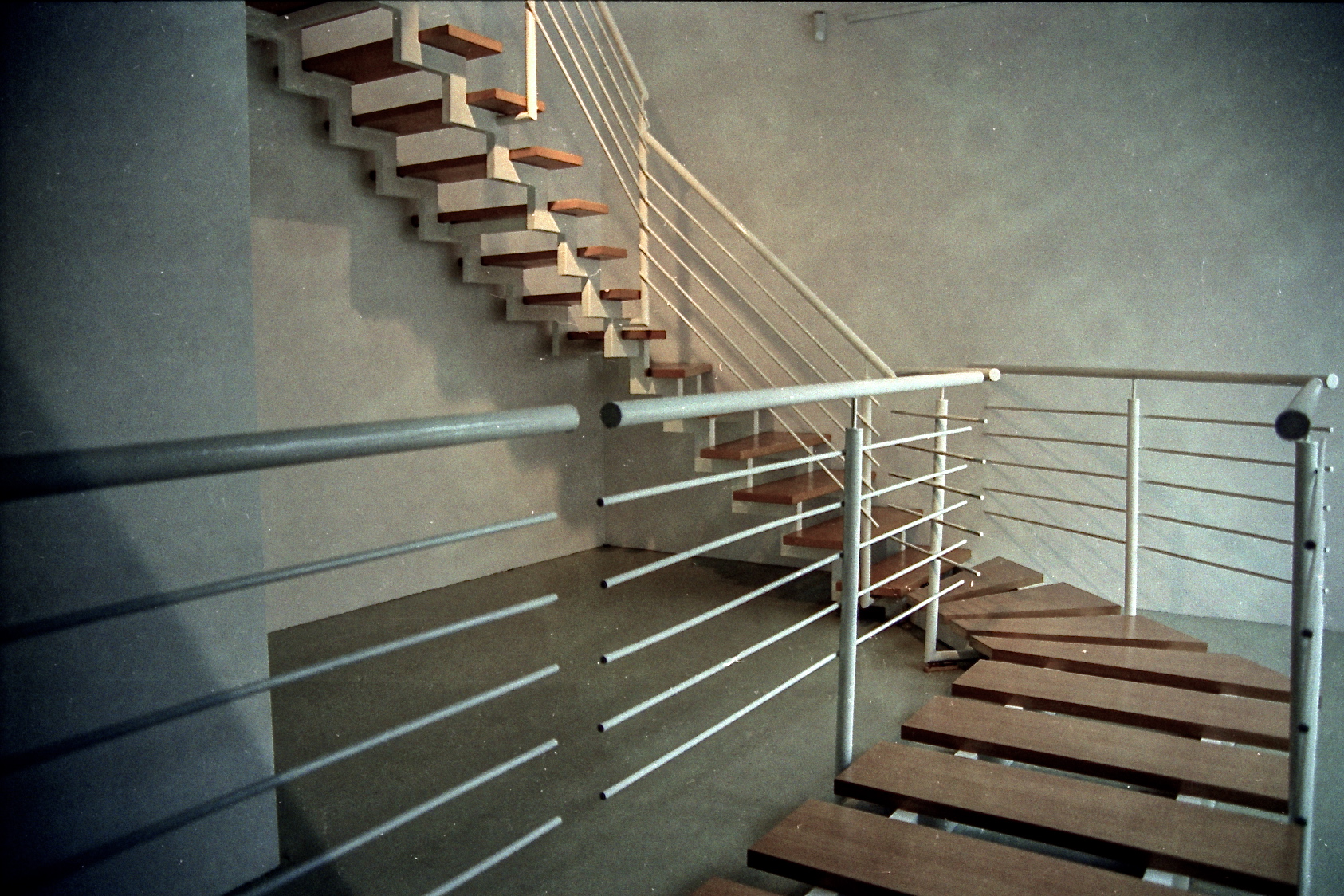Den Ausgangspunkt für diese Installation bildet der Galerieraum mit seinen konkreten architektonischen Gegebenheiten. Es gibt also keinen Nullpunkt, sondern es wird auf bereits Vorhandenes reagiert. Dabei beschränkt sich die Arbeit ausschließlich auf eine Anfügung: eine Treppe, welche zwei Geschosse verbindet, wird mitsamt Handlauf in identischem Material zu ebener Erde quer durch den Raum verlängert.
Die Absurdität der Konstruktion besteht darin, dass eine funktionale Absicht nur vorgetäuscht wird – ein Treppengang der keinen Zweck erfüllt. Das Geländer wird zur Absperrung, welche die eigentliche Nutzung der Architektur verhindert. Die “Gangway” bietet sich nicht an, sie weist zurück. Was bleibt, ist ein leerer Raum, der nur durch die Glastür von aussen zu betrachten ist – eine typische Schaufenstersituation. Die Galerie bleibt für die Zeit der Ausstellung geschlossen, wird aber nachts von innen beleuchtet.
The architectural features of this particular gallery provided the point of departure for this installation.There is no empty space that becomes reconfigured, instead there is a reaction to what is already in place. The installation becomes an extension, an addition: A staircase, which joins the two floor levels, becomes extended across the exhibition room of the entrance floor. This extension, – the steps, as well as the banister and handrail are made of the same material as the pre-existing staircase.
The construction’s inherent absurdity lies in the fact that its intent, in terms of functionalism,is sheer illusion. The handrail becomes a barrier, denying the actual architectural use. “Gangway”, despite its name, does not invite the visitor, but denies him entrance. What remains is an empty space, only to be experienced from the outside through the entrance glass door -recalling a typical shop-window situation. The gallery remains closed for the entire duration of the show, but is illuminated at night.

